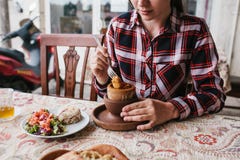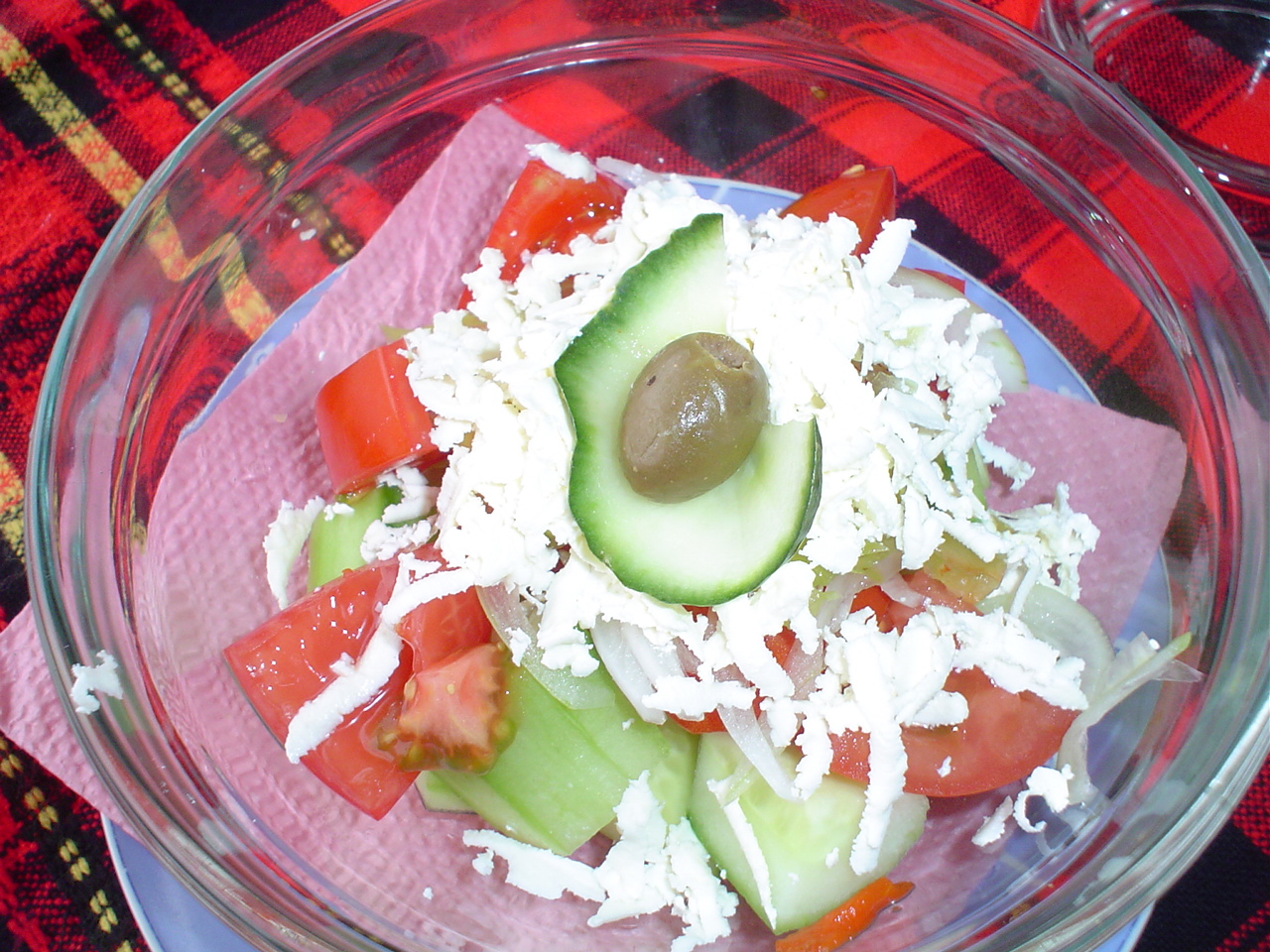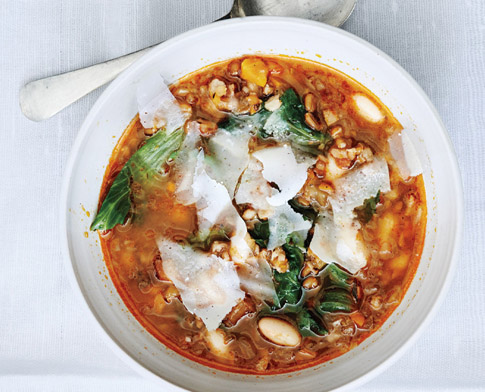 Zdrowy instynkt podpowiadał Bułgarowi, jak ma się odżywiać, aby zaspokoić potrzeby organizmu w czasie ciężkiej pracy, zależnie od pory roku. I tak, kotlety i „kebapy” wieprzowe należały do menu zimowego, natomiast konserwowane mięsa solone, jak ,,pastyrma” lub „sazdyrma” Spożywane były w lecie, gdy praca w upale powodowała odwadnianie organizmu.
Zdrowy instynkt podpowiadał Bułgarowi, jak ma się odżywiać, aby zaspokoić potrzeby organizmu w czasie ciężkiej pracy, zależnie od pory roku. I tak, kotlety i „kebapy” wieprzowe należały do menu zimowego, natomiast konserwowane mięsa solone, jak ,,pastyrma” lub „sazdyrma” Spożywane były w lecie, gdy praca w upale powodowała odwadnianie organizmu.
Nowoczesna kuchnia bułgarska — kontynuując niemal wszystkie stosowane w przeszłości zasady — zręcznie zaadaptowała je do współczesnych warunków. Nikt już wprawdzie nie zagrzebuje dziś garnków w gorącym popiele, ale zawsze uważa się bardzo, aby potrawa gotowała się na małym ogniu, co pozwala na zachowanie w pełni jej właściwości smakowych i zapachowych.
Klasycznym przykładem uwspółcześnienia przepisów kuchni tradycyjnej jest ,,stomna-kebap” (kebap w dzbanie). Kiedyś mięso, cebulę, pomidory, paprykę i przyprawy wkładano w stanie surowym do glinianego dzbana, który — po zalepieniu otworu gliną — zagrzebywano w gorącym popiele. Gdy danie było gotowe, rozbijano po prostu szyjkę dzbana. Dziś „stomna kebap” przyrządza się w sposób następujący: mięso kraje się na drobne kawałki, obsmaża na tłuszczu, a potem wyjmuje z naczynia. W tym samym tłuszczu dusi się młodą cebulę — najpierw główki, potem szczypiorek. Dodaje się przecier pomidorowy i mąkę, a gdy mąka stanie się złotawa — rozprowadza ją wodą, dosypując sól, pieprz, czubricę i czuszki. Do sosu wrzuca się ponownie mięso i dusi je, a gdy jest już dostatecznie miękkie, rozdziela się kebap w kokilki lub gliniane miseczki i zawiązuje je nawilżonym pergaminem, a następnie zapieka w piekarniku do chwili, aż papier na kokilkach opadnie.
W bułgarskiej kuchni dba się bardzo o zachowanie naturalnych właściwości produktów. Warzywa, a szczególnie mięso, smaży się tu więc bardzo krótko, a następnie dusi podlewając wodą lub bulionem, aż do uzyskania odpowiedniej ilości esencjonalnego sosu. Tak przygotowuje się różnego rodzaju kebapy i „jachnije”. Mięso przesiąka zapachem warzyw, warzywa wchłaniają tłuszcz, sos — słodkawy od przysmażonej mąki i cebuli — gęstnieje.
Między kebapem a jachniją jest zasadnicza różnica w smaku. Mięso w kebapie jest bardziej soczyste i ma mniej sosu niż mięso w jachnii duszone razem z warzywami. Sos ten ma charakterystyczny czerwonawy kolor otrzymywany przez jednoczesne duszenie cebuli i pomidorów w tłuszczu, do którego dodaje się również mąkę i mieloną paprykę. Jachnije można sporządzać także bez mięsa — z samej fasoli, soczewicy lub kabaczków.








